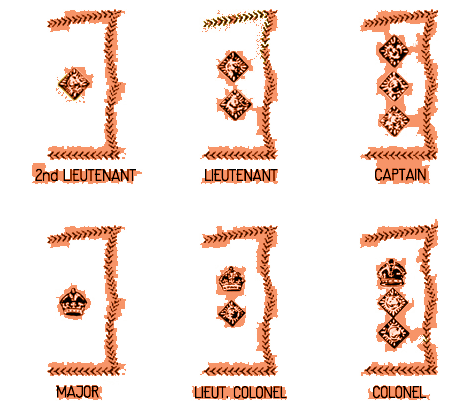The Realities of War
Have you ever wondered what life was like for a soldier during WWI? Those brave men had to overcome many hardships through one battle after the next. Discover some of the most important battles of World War One, as well as the average daily schedule of a soldier.
Important battles
In August 1914, at the beginning of WWI, Canada’s army had barely 3,000 regular troops.
That fall, just over 30,000 volunteers became trained men and were deployed to Britain, then France on to the front lines. This first contingent of 32,000 soldiers made up the 1st Division of the Canadian Expeditionary Force (CEF).
Additional men were recruited thereafter and became part of the second, third, and fourth divisions of the Canadian Expeditionary Force (CEF). A fifth division was planned for, but was never created.
Initially Indigenous, Chinese and Black Canadians were not allowed to enter the army because of racism. It was only in 1916, when there was a shortage of volunteers (and thousands of deaths!) that they were allowed to enter the army.
THE SECOND BATTLE OF YPRES
APRIL 22 TO MAY 3RD, 1915
The Second Battle of Ypres was the first major battle for the Canadians. On this battlefield, chlorine gas was introduced by the Germans causing Allied troops to retreat. The Canadians held strong and stopped the Germans from advancing. Canadian troops gained the reputation of being tenacious.
In 48 hours, there were 6,000 Canadian casualties (2,000 dead) out of 18,000 men. British forces lost 59,000 men.
“(The gas) came up and went over the trenches and it stayed, not as high as a person, all the way across,” said Lester Stevens, a member of the Eighth Battalion from Winnipeg who witnessed the second gas attack. “Two fellows, one on my right and one on my left, dropped. And eventually they got them to hospital, but they both died. […] I was a bit of an athlete in those days and a good swimmer, and I could hold my breath […] as soon as I saw that gas coming, I tied a handkerchief over my nose and mouth. […] That saved my life.”
FESTUBERT
MAY 19 TO 22, 1915
The Germans held the advantage on the field. The Canadians had very little preparation time and were given inaccurate maps to prepare for their assault.
This battle showed the importance of reconnaissance and preparation.
Number of Canadian casualties (killed ounded or missing): 2,500
RMR Casualties: Approximately 144 (including 36 that were killed or died of their wounds).
ST. ELOI
MARCH 27 TO APRIL 16, 1916
During this battle, helmets were introduced to British and Canadian troops. This reduced the number of head wounds caused by shrapnel, reducing the number of deaths.
Number of Canadian casualties: Approximately 1380
MOUNT SORREL
JUNE 2 TO 13, 1916
June 1916- The 3rd Division of the Canadian Corps was attacked by the Germans near the city of Ypres with heavy artillery. Canadians, coordinating artillery and infantry, counterattacked and won the position albeit at a heavy cost.
Canadian casualties: 8,000
RMR Casualties: 145 killed or missing, and approximately 435 wounded (379 of total on the first day).
VERDUN
FEBRUARY 21 TO DECEMBER 18, 1916
The Battle of Verdun began as the Germans started experimenting with attrition warfare. It became one of the longest, bloodiest and deadliest battles of WWI. The German’s goal was to “bleed France white” by forcing soldiers to repeatedly attack an area of symbolic importance and turning it into a “meat grinder.”
Approximately 150,000 men were killed on each side and several hundred thousand injured by the time it ended in December.
(No British or Canadian participation)
THE SOMME
JULY 1 TO NOVEMBER 18, 1916
This battle was launched by the British to take pressure off the French in Verdun. Lasting some four months, the Somme was one of the bloodiest battles ever fought: 20,000 British soldiers were killed on the first day of the battle. The Canadians entered the Somme campaign, taking Courcelette with the help of a new invention: tanks. Known at the time as “land battleships”, tanks were used for the first time during the Battle of the Somme. Rudimentary tanks the size of a modern school bus lumbered slowly towards the enemy lines, creating panic amongst the Germans. Mechanically unsound, most tanks broke down.
The Somme campaign petered out with some 200,000 killed on both sides (24,029 Canadian casualties in 2 months of fighting).
Each side had more than 400,000 casualties (some estimates are up to 600,000 on the Allied side) by the end of battle.
RMR casualties: Approximately 800 (including 199 killed or missing, and about 600 wounded at the Somme.
VIMY RIDGE
APRIL 1917
Visit our exhibition Regiments on the Ridge to know
more about the battle of Vimy Ridge!
The Canadian Corps was tasked with the capture of Vimy Ridge. Previous attempts to seize the ridge by French and British troops were unsuccessful. The Canadians had to apply the lessons learned from their own battle experience and that of their allies to carefully plan an operation that would succeed.
Assaulting infantry battalions had to locate the enemy. For the first time ever, not only the officers, but all soldiers were given details about their objectives. 40,000 trench maps were printed and distributed to the attacking Canadians. A “creeping barrage” was a method of coordinated artillery fire designed to create a “wall of steel” that moved forward slowly at a predictable rate ahead of the advancing troops. Soldiers practiced their timing to perfectly coordinate with the artillery barrage. This rate of advance became known as the “Vimy glide”.
Preparations for Vimy included extensive underground excavations. This included placing large amounts of explosives near or beneath the enemy’s position in “mines” at the end of underground tunnels. These were to be blown up just before the attack began. When detonated, the explosions would destroy part of the enemy’s trenches and the attacking troops would rush into the gap created.
Air reconnaissance helped to locate vital enemy locations. German artillery emplacements and trench systems were spotted and largely destroyed before the arrival of the infantry. This was due to the close coordination between the pilots and the gunners. Airplanes and human flight had only been created 14 years earlier by the Wright brothers!
Canadian casualties (killed and wounded): 10,600
RMR casualties on Apeil 9th 1917: 274 (98 killed)
PASSCHENDAELE,
THE THIRD BATTLE OF YPRES
JULY 31 TO NOVEMBER 10, 1917
The Battle of Passchendaele, also called the “Third Battle of Ypres” was launched by the British in July 1917 to secure the Belgian coastal ports and quickly became synonymous with “mud.” Water and mud made the combat very difficult and slowed movements to a crawl. The offensive had ground to a near-halt by October when the Canadians, now regarded as “Shock Troops,” were ordered to finish it off. One hundred thousand Canadians were sent into the battle at end of October 1917. They achieved success, fighting for weeks through waist-high mud to capture Passchendaele, a strategic village that dominated the Ypres salient.
The cost was high: 15,654 Canadian casualties.
Casualties were high for both sides: 275,000 for the Allied Forces and 220,000 for the Germans.
RMR casualties: Approximately 200 (including 52 killed).
HILL 70
AUGUST 15 TO 20, 1917
Canadian troops captured Hill 70 in France under the command of a Canadian: General Arthur Currie. This was the first time the Canadian Corps fought a major battle under the leadership of a Canadian commander. After capturing the hill, the Canadians then secured the nearby city on Lens, though it was in ruins.
1,056 Canadians were dead, 2,432 wounded and 39 taken prisoner in a single day.
About 9,000 Canadians were killed or wounded in the effort while an estimated 25,000 Germans were killed or wounded. 6 Victoria Crosses were awarded.
RMR casualties: 112 (28 killed in action or died of wounds).
Key events
A Day in the Life of a Soldier
The war on the Western Front was fought in trenches – long, narrow, deep, and muddy ditches. Canadian Infantry soldiers were rotated in and out of the trenches, as it was the most dangerous place on earth to be. The trenches were extraordinarily uncomfortable and soldiers in the trenches were under frequent enemy artillery fire. The soldiers lived with vermin such as rats, lice, maggots, and flies which created serious health risks. The trenches were also constantly exposed to the weather. Here is what a day in the trenches looked like for soldiers.
Afternoon
Night
Morning
An Overview of the Canadian Uniforms
Each soldier carried a minimum of 60 pounds of equipment. Adding to that, the weight of mud collected on uniforms and equipment typically added another 60 pounds.
The Canadian Expeditionary Force soldiers wore the same uniform, which was made from a thick wool and dyed in khaki. Wearing a drab color was a good way to camouflage on the battlefield.
Officers’ uniforms, like this one on the left, were slightly different from those worn by soldiers. Officers had a button shirt and a tie underneath a opened collar jacket. Their pants were not a straight cut, but rather larger around the thighs and tighter around the calves. Officers were also allowed to carry certain objects with them such as a whistle, a camera and a handgun.
What’s an Officer ?
An officer has a wide range of responsibilities such as coming up with plans and being trusted with the execution of operations and daily activities. Officers are in command so they issue orders and lead soldiers to achieving the plans.

